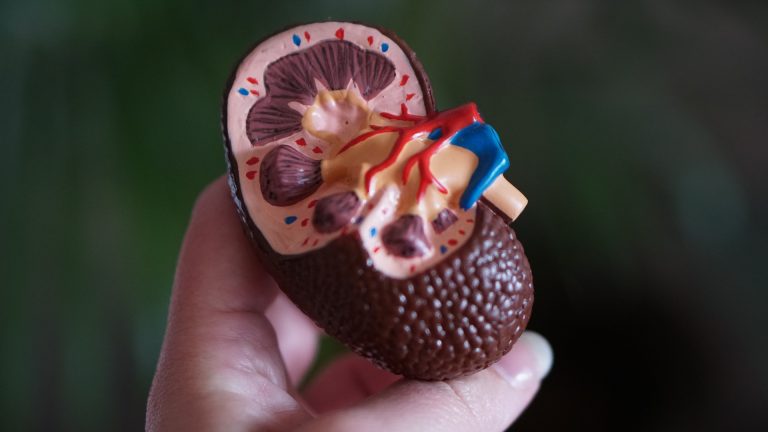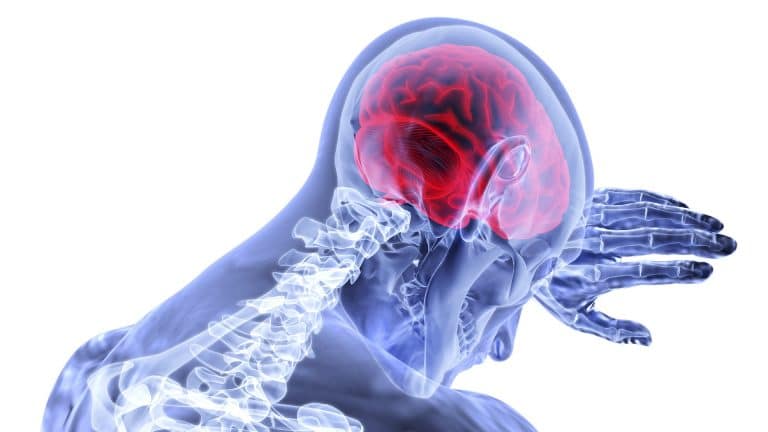50 Concerning Alcoholism Statistics & Facts for 2024

In a nutshell, alcoholism is an addiction to drinking alcohol. With as many as 15 million adults in the US having an alcohol use disorder, we are to learn just how dangerous it really is.
The following alcoholism statistics paint a realistic picture of this health crisis. That is because the damage this substance abuse brings about to our mental and physical health cannot be overstated.
Hopefully, our thoroughly compiled statistics and facts help raise awareness of the issue.
Top-10 Alcoholism Statistics for 2024
- Alcoholism is about 50% hereditary.
- Humankind has been making alcohol for at least 12,000 years.
- Alcoholics Anonymous (AA) has about 2 million members in the world.
- More than 10% of children in the US have at least one parent with alcoholism.
- The Native Americans’ rate of alcoholism is the highest—7.1%.
- Over 50% of adults have blacked out at least once.
- As many as 15 million adults in the US have an alcohol use disorder.
- Alcoholism is the third-leading preventable cause of death in the US.
- Globally, 3 million deaths are caused by alcohol use.
- In the US, national sales of alcohol increased dramatically in 2020.
Historical Facts About Alcohol
How long have people been making alcohol, and how much did they drink in the past? What are some of the supernatural powers people thought alcohol had? In this section, you will find some of the most interesting and thought-provoking facts, so don’t miss out.
1. Humankind has been making alcohol for at least 12,000 years.
(Sawyer Hartman Film)
Some drinking alcohol facts claim that people have been drinking longer than civilization has been around. As a matter of fact, it’s believed that farming was invented to produce ingredients for making alcohol. It appears that our ancestors cherished alcohol since they saw it as a nourishing and relaxing substance.
2. Sumerians in Mesopotamia made beer between 2000–3000 BCE.
(Recovery)
Research and facts about alcohol prove that they placed regulations and specific rules on its consumption. Sumerians also used beer in religious ceremonies as an offering to the gods. Beer was so important to them that they even mentioned it in the epic story Gilgamesh, in which a primitive man transforms into a cultured human being after drinking seven cups of beer.
3. The first thing Noah purportedly did after the Great Flood was plant a vineyard.
(Encyclopedia)
Alcohol was believed to have enormous religious power and importance, alcohol history facts disclose. For instance, the Egyptians believed that the god Osiris taught them how to make beer, while the Greeks consumed wine as a form of worship. Another interesting finding is that grain-based beer and wine were used for religious ceremonies and royal burials in China as early as 2000 BCE.
4. By 1790, Americans consumed an average of 5.8 gallons of alcohol per person every year.
(Recovery)
In Colonial America, people drank throughout the day. They mostly drank cider, beer, and rum. Following the increasing demand, New England quickly became the most popular location for distilleries. According to alcohol facts, there were over 140 distilleries, and alcohol consumption totals rose to 7.1 gallons per person annually by 1830.
5. The Mayflower landed on Cape Cod because the passengers and the crew ran out of beer.
(Mayflower 400 UK)
The Mayflower was an English ship that transported English families from England to New World in 1620. Groups of those English families are also known today as the Pilgrims.
At that time, passengers were rationed one gallon of beer per person a day since drinking water was unsafe. As their voyage across the Atlantic was taking longer than they’d thought it would, they started running out of beer. Following that, the ship landed on Cape Cod.
Must-Know Alcohol Awareness Facts and Stats
What’s the legal drinking age in the US, and do teenagers abide by that? What is behind the terms binge drinking and heavy drinking? The answers might surprise you. Let’s see what there is to learn here.
[visualizer id=”97302″]
6. In April 2020, 46% of British people reported drinking the same amount of alcohol.
(Statista)
Alcohol facts and statistics revealed that nearly half of the surveyed alcohol consumers hadn’t changed their drinking habits. Interestingly, 28% of the survey respondents reported drinking less, 17% were drinking more than usual, and 9% stopped drinking alcohol.
7. In the US, 21 is a minimum legal age for drinking, alcohol facts reveal.
(CDC) (Gallup)
The National Minimum Drinking Age Act of 1984 prohibits individuals younger than 21 from buying alcoholic drinks. What’s more, Americans are still opposing lowering the drinking age to 18. As many as 74% of those surveyed rejected the idea, while 25% were in favor of it.
8. Alcohol consumption statistics reveal that around a quarter of Americans under 18 try alcohol.
(Drug Rehab)
This data is provided by the National Survey on Drug Use and Health, published by the federal government in 2017. The survey also pointed out that over three-quarters of Americans try alcohol before the age of 25. It was also revealed that, overall, an astounding 85% of adults had had alcohol.
9. Alcoholism facts point out that binge drinking takes fewer drinks than you’d expect.
(CDC)
According to the Centers for Disease Control and Prevention (CDC), binge drinking for women implies consuming four or more drinks on a single occasion while it is five or more drinks for men. As for heavy drinking, the CDC defines it as eight or more drinks every week for women and 15 or more drinks per week for men.
10. 32% of heavy drinkers over 12 also use illicit drugs.
(Drug-Free World)
Drug and alcohol abuse statistics uncover that young people who drink are 7.5 times more likely to start using illicit drugs, too. To put it another way, 32% of heavy drinkers turn to illegal drugs. Furthermore, they are 50 times more likely to start using cocaine than young people who never drink.
11. Alcoholism is about 50% hereditary.
(Addiction Center)
Hereditary alcoholism statistics note that people who have a family history of alcohol use disorder have considerably higher chances of having a drinking problem themselves. Namely, about half of them develop it at some point. Other risk factors are environmental (stress, relationships, or work).
12. In 2005, 3.9 million Americans received treatment for substance abuse.
(Drug-Free World)
According to alcoholism statistics, alcohol abuse is highly prevalent in the country. Of those receiving treatment for substance abuse, 2.5 million were treated for alcohol abuse. The same year, 16 million people aged 12 or over admitted to drinking heavily or binge drinking on at least five days of the past 30.
13. 36% of those surveyed increased their alcohol intake during the quarantine.
(BMJ Open)
Namely, those were essential workers, older people, people with children, and those with a personal relationship to someone severely ill from COVID-19. The survey also pointed out that alcohol consumption has increased among those with positive urgency impulsivity, anxiety, and depression.
14. In the US, national sales of alcohol increased dramatically in 2020.
(JAMA Network)
Alcohol consumption statistics show that there has been an increase in alcohol sales. Namely, stats marked a 54% increase in national alcohol sales for the week ending March 21, 2020, compared to one year ago. Additionally, there was a 262% increase in online sales in comparison to 2019.
Facts and Statistics on Alcohol Abuse
Alcohol addiction is the most common substance use disorder that costs the US a fortune. People turn to all kinds of recovery programs and online therapy sites, all with the end goal to get better. If you want to know more about the number of people who have been in recovery, the number of AA members, the percentage of children with a parent with alcoholism, Native American alcoholism facts, and more, keep reading.
15. The most common substance use disorder is alcohol addiction.
(Drug Rehab)
Addiction is always a serious problem, no matter if a person is addicted to drugs, alcohol, or something less serious. According to official alcohol addiction statistics, the most common type of addiction in the US is alcohol addiction. Note that alcohol use disorder (AUD) is the medical term for alcoholism, and substance use disorder is the medical term for addiction.
16. More than 5.3 million women aged 18 and older have an alcohol use disorder.
(Talbott Recovery)
According to alcoholism statistics, 18% of women in this age group binge drink. Moreover, between 2002 and 2013, alcohol abuse disorder in women increased by 83.7%. High-risk drinking, which is more than three drinks per day or more than seven a week, also increased by 58%.
17. When surveyed, almost 60% of adult men admitted to drinking in the last month.
(Talbott Recovery)
Around 23% of them admit to binge drinking five times a month. What’s more, 8.4% of men met the criteria for alcohol dependence in the last year, alcohol abuse statistics reveal. Men are also twice as likely to binge drink and drive under the influence than women.
18. A 2012 study reported that about 23 million Americans were in recovery from alcohol abuse.
(Drug Rehab) (The Recovery Village)
Alcoholism treatment statistics disclose some startling data. Less than 20% of alcoholics who receive treatment for AUD remain alcohol-free for a year. Another interesting finding is that 60% of those who are sober for two years remain alcohol-free.
Overall, the lowest rate of relapse is in people who’ve been alcohol-free for more than five years, according to alcoholism relapse statistics. Although the risk of relapse is always present, in general, the longer a person is sober, the less likely they are to relapse.
19. Alcoholics Anonymous (AA) has about 2 million members in the world.
(Rehabs)
AA meetings can be of help when it comes to fighting alcohol addiction. In a nutshell, they offer support to people who want to go to rehab, those who’ve recovered, and those who need help fighting alcohol withdrawal, relapse, and so on. As for their success rates, alcoholism statistics break the news that 33% of AA members have been sober for over ten years.
20. In 2010, alcohol addiction cost the US $249 billion.
(AlcoRehab)
Even though a functioning alcoholic can work, their productivity lessens. That and other unhealthy lifestyle habits are only a few of the many ways in which alcoholism impacts a person. The economic burden also plays a significant role, as alcohol abuse drains the economy.
21. More than 10% of children in the US have a parent with alcoholism.
(AlcoRehab)
The latest alcoholism facts emphasize that children who grow up in these kinds of families have a high chance of suffering from physical, verbal, and emotional abuse. Physical and emotional neglect can also occur in these cases, leaving the children traumatized.
22. The 2018 Native American alcoholism statistics showed a high rate in this group—7.1%.
(American Addiction Centers)
As of 2018, the rate of Native Americans who had alcohol use disorder was 7.1%, which was higher than that of the total population—5.4%. The National Survey on Drug Use and Health also found that three in ten Native Americans aged 18–25 admitted to binge drinking in the past month. What’s more, one in eleven Native Americans reported heavy drinking, and one in ten had an alcohol use disorder.
Facts and Stats on Alcohol Consumption and Its Consequences
Besides physical damage, alcohol can harm one’s mental wellbeing, as well. All in all, long-term use of this substance can lead to some severe complications. Get more information on the matter by reading about blackouts, the number of people in the US who abuse alcohol, alcohol poisoning deaths, drunk driving, and much more.
23. Alcoholism is the third-leading preventable cause of death in the US.
(NIH)
The alcoholism in America statistics reveal that 95,000 people, of which 68,000 are men and 27,000 are women, die from alcohol-related causes annually. That makes alcohol the third-leading preventable cause of death in the US. Note that the first one is tobacco, and the second—physical inactivity and poor diet.
24. Over 50% of adults have blacked out at least once.
(Drug Rehab)
When it comes to an alcohol blackout, the facts indicate that it’s mainly caused by binge drinking, affecting women more than men. A person may still process information during a blackout, but they aren’t forming new memories.
25. 1 in 50 college students who experienced a blackout said they blacked out after drinking beer alone.
(Drug Rehab)
College alcoholism statistics suggest that using Valium and Rohypnol with alcohol increases the chances of blacking out. Abusing the drugs without alcohol is already bad enough as it causes memory loss. Following that, the effects of these drugs are enhanced if alcohol is mixed in.
26. In the US, 15 million people ages 12 and older have an alcohol use disorder.
(NIH) (Talbott Recovery)
The rate of alcoholism in the US is increasing. That’s why it’s imperative to spot the signs of alcohol abuse for us to be able to help someone.
To be more precise, alcohol abuse symptoms may include:
- Getting into trouble at work or school
- Being unable to perform tasks
- Blacking out
- Engaging in dangerous activities like driving under the influence.
Additionally, depression and alcoholism statistics find that this can lead to losing interest in the things you used to enjoy, drinking by yourself, facing various legal and health problems, or experiencing other depression symptoms.
27. About three in four alcohol poisoning deaths affect adults aged 35–64.
(Alcohol Rehab Guide)
Statistics on the alcoholism death rate reveal that, on average, six Americans die from alcohol poisoning every day, totaling 2,200 deaths every year. Another finding states that alcoholism was found to be a leading factor in 30% of alcohol poisoning deaths.
28. Every year, drunk driving costs the US $199 billion, United States alcoholism statistics remark.
(Talbott Recovery) (CDC)
As many as 10,497 people died in alcohol-impaired driving crashes in 2016. Astoundingly, that is 28% of all traffic-related deaths in the country. Another startling finding is that 214 of the 1,233 traffic deaths among children aged 0–14 in 2016 involved an alcohol-impaired driver.
29. In 2016, 3 million deaths worldwide were attributable to alcohol use.
(NIH)
Facts about alcohol abuse from 2016 remark that 5.3% of all global deaths were attributable to alcohol consumption—7.7% for men and 2.6% for women. According to data from 2014–2016, alcoholism was the seventh-leading cause of premature death globally. That said, it was the leading cause for those aged 15–49. As for those aged 20–39, alcohol was attributable to 14% of all deaths in 2016.
30. In 2018–2019, 358,000 people were treated for alcohol poisoning in England alone.
(NHS Digital)
Alcohol poisoning facts report that hospital admissions attributable to alcohol were frequent in 2018–2019. Namely, there were 358,000 of those. That’s 6% higher than 2017–2018 and 19% higher than 2008–2009.
31. The most severe cases of alcohol poisoning may cause coma or even death.
(Drinkaware)
It’s essential to know the symptoms of alcohol poisoning so that you can help someone. You might also use turn to medical alert systems for quick access to emergency services.
Generally, some of the less dangerous symptoms may include confusion and loss of coordination. But there may also be seizures, vomiting, breathing problems, pale or bluish skin, hypothermia, blacking out, passing out, and more.
32. Alcohol consumption can cause hypertension, according to the alcoholism facts.
(Drinkaware)
Excessive alcohol consumption can lead to high blood pressure or hypertension. Usually, you won’t notice or feel hypertension, but regular drinking, lack of exercise, obesity, and family history of the condition increase the risk of developing high blood pressure. What’s important to realize is that the most damaging effects of high blood pressure are linked to having a heart attack or stroke.
33. In 2019, 43.1% of liver disease deaths involved alcohol, as statistics about alcoholism report.
(NIH)
In 2019, there were 85,688 deaths related to liver disease among people aged 12 and older, and 43.1% of them involved alcohol. Moreover, 45.6% of the 53,486 liver disease deaths among males involved alcohol, too. As for women, it was 39% of 32,202 liver disease deaths.
34. Each year, about 11,900 cases of cancer in the UK are caused by alcohol consumption.
(Patient)
The alcohol and cancer statistics report that alcohol consumption is a risk factor for developing mouth cancer, upper throat cancer, food pipe cancer, voice box cancer, breast cancer, bowel cancer, and liver cancer. That said, according to Emma Shields, health information manager at UK Cancer Research, it doesn’t mean that we have to give alcohol up completely. Having smaller servings and more alcohol-free days could go a long way.
Fetal Alcohol Syndrome Facts and Stats
When thinking about drinking alcohol during pregnancy, keep in mind that there is no safe time. Equally, it can cause problems for the developing baby, even before the mother knows she’s pregnant. In essence, this section reveals everything you need to know from start to finish about fetal alcohol syndrome.
35. Fetal alcohol syndrome is found in 0.3 out of 1,000 children aged 7–9, statistics on alcoholism reveal.
(CDC)
Fetal alcohol spectrum disorders (FASD) is a term that covers a significant number of disorders, like fetal alcohol syndrome (FAS), alcohol-related birth defects (ARBD), alcohol-related neurodevelopmental disorder (ARND), and others. Now, CDC has estimated that there are 0.2–1.5 infants with FAS for every 1,000 live births in the US.
36. The fetal alcohol syndrome statistics report that nearly 40,000 babies are born with FASD each year.
(Healthy Children)
According to studies carried out by the Centers for Disease Control and Prevention, between 800 and 8,000 babies could be born with FAS every year. Note that damage from prenatal alcohol exposure can occur even in the first weeks of pregnancy when a woman is not aware of her state.
37. A child cannot get FASD if you drink while breastfeeding.
(Healthy Children)
If you want to have an alcoholic drink, alcohol facts remark that the best time for that is right after you breastfeed or pump milk. That said, pump breast milk or nurse not sooner than four hours after your last drink containing alcohol because that way, the body will get rid of the alcohol before the next time you breastfeed.
38. Alcohol is more harmful during pregnancy than drugs, according to fetal alcohol syndrome statistics.
(Proof Alliance)
Alcohol inflicts the most severe damage to the fetus. It doesn’t matter what type of alcohol you consume or how much—any amount of any kind of alcohol can be harmful to the baby. Fetuses and babies can’t process alcohol, so alcohol passes unmetabolized into the amniotic fluid. Do not consume alcohol if you are pregnant.
Drug Abuse and Alcoholism Facts and Statistics
The combination of drugs and alcohol is a lethal one, killing over 11 million people annually. People using these substances are usually younger, have less than high school education, and are more likely to commit suicide, as drugs and alcoholism demographics confirm. Read on as we go into more detail.
39. Over 4 million Americans ages 12 and over are addicted to a combination of alcohol and drugs.
(City Vision University)
In 2009, approximately 23 million Americans needed treatment for illicit drug or alcohol abuse. Of those, 15 million were addicted to alcohol, 4 million were dependent on drugs, and the rest were addicted to both. Teenage alcoholism statistics also show that alcohol kills more than all other drugs combined. It is also involved in the three leading causes of death (accidents, homicides, suicides) among those aged 15–24.
40. Drug and alcohol use costs the US more than $1.45 trillion per year.
(PR Newswire)
A study by the Recovery Centers of America (RCA) provides startling drug and alcohol use disorder statistics. From lost productivity, costs to employers and the economy, crime on families and cities, to health care treatment costs, the economic impact of drug and alcohol use totals $1.45 trillion a year.
41. Alcohol, smoking, and illicit drug use combined kill 11.8 million people a year.
(OWID)
As pointed out in countless alcoholism statistics, their combination can be fatal. Even though it may seem unlikely, alcohol, smoking, and illicit drug use together kill more people than cancer. Namely, they kill 11.8 million people a year. Additionally, more than 50% of those who die from drug or alcohol overdoses are under 50.
42. 5% of current alcohol drinkers reported using drugs other than marijuana in the last 12 months.
(NCBI)
Statistics on alcohol abuse reveal that 1.7% reported drinking alcohol and using drugs other than marijuana at the same time. As for marijuana, simultaneous use of the substance with alcohol can be attributed to many factors. Some of them are not having a regular partner, being younger, having heavier drinking patterns, and having a less than high school education.
43. Those treated for alcohol misuse are ten times more likely to commit suicide.
(City Vision University)
What’s more, drugs and alcohol facts show that individuals who abuse the former are at 14 times greater risk for eventual suicide. As for alcohol overuse, it accounts for 2.5 million years of potential life lost (YPLL) every year. That is 30 years, on average, of potential life lost for each death.
Other Interesting Facts About Alcohol
Here, you can find some of the most interesting alcohol data. Learn about the world’s strongest drinks, Russians’ drinking habits, the world’s biggest brewery, the drink with the lowest number of calories, and much more!
Alcohol Consumption Per Capita From All Beverages in the US in 2018, by State (in Gallons of Ethanol)
[visualizer id=”97309″]
44. As of 2018, New Hampshire is the state with the highest alcohol consumption per capita.
(Statista)
As of 2018, New Hampshire has the highest alcohol consumption per capita—4.67 gallons of ethanol. Right behind it are the District of Columbia (3.77 gallons), Delaware (3.52), Nevada (3.42), North Dakota (3.16), and Montana (3.1). That said, California and Texas are taking the lead when it comes to the overall number of gallons of pure alcohol consumed—81.2 million and 51.8 million, respectively.
45. The world’s strongest beer is 67.5% alcohol by volume (ABV).
(Man of Many)
Snake Venom from Scotland’s Brewmeister is the strongest beer in the world, based on alcohol facts and statistics. Usually, beer has under 10% ABV, so 67.5% is more than an impressive number for beer lovers. The previous strongest beer was the brewery’s Armageddon, with ABV of 65%.
46. The strongest drink in the world has 96% ABV.
(Novus Bars)
The drink with 96% ABV is the Polish liquor called Spirytus Stawski, and according to our interesting facts about alcohol, it’s made from pure grain. People who’ve tried it describe a sip from this drink like an actual hard punch in the stomach, one that hinders your breathing.
47. In Russia, the annual per capita consumption of vodka and other strong alcohol stood at 18 liters in 2011.
(Understand Russia)
Alcohol use statistics suggest that the number is slowly decreasing. Namely, in 2014, the annual per capita consumption fell to 13.5 liters of alcohol. That might be because the general public’s preferences are changing. The drink of choice among youth is beer, while people aged 30 and older prefer drinking wine.
48. Grupo Modelo’s brewery is the biggest one in the world.
(AB InBev)
This Mexican drink and brewing company produces 20 million bottles and 6 million cans of beer per day. Some of the brands under Grupo Modelo’s brewery are Victoria, Michelob Ultra, Corona, Bud Light, Negra Modelo, and Pacifico. Finally, it’s worth noting that the company reduced water consumption by around 11% across its breweries in Mexico.
49. According to the alcohol nutrition facts, vodka has the lowest number of calories—100 per shot.
(Man of Many)
Namely, one shot of vodka (1.5 ounces) has 98 calories. Be that as it may, drinking alcohol isn’t recommended if you want to lose weight because it can trigger cravings for fatty foods, and it generally increases the appetite.
50. 20% of alcohol is absorbed through the stomach, as per facts about alcohol.
(UCSC) (Healthline)
When we swallow a drink, it goes into our stomach and small intestine, and it is carried to the bloodstream by blood vessels. Given that, about 20% of alcohol is absorbed through the stomach, and the other 80%—through the small intestine. Therefore, we get drunk quicker on an empty stomach as alcohol passes to our small intestine very quickly.
Bottom Line
Enjoying an occasional drink can lift your spirits and does little harm to your body or psyche. But it’s important to remember these alcoholism statistics as a form of prevention against alcohol use disorder. They may also let you help someone who’s becoming addicted to alcohol or already has problems with heavy drinking.
FAQs
What is alcoholism?
Alcohol use disorder (AUD), or alcoholism, is a condition in which an individual feels the physical need, or the desire, to drink alcohol, regardless of the consequences. In a nutshell, it is a drinking problem that can be mild, moderate, or severe.
Who is an alcoholic?
A person who has alcohol use disorder is referred to as an alcoholic. Alcoholics aren’t aware of how much they drink. They can’t control their alcohol consumption, even if they know that it’s causing problems at work, school, or relationships with family, friends, and partners.
How does alcohol affect the body?
Below are some of the things alcohol does to your body:
- slows the immune system
- makes it harder for our intestines to control bacteria and absorb nutrients
- can lead to malnutrition
- harms the liver
- inhibits new bone production
- causes heart problems
- changes our behavior.
How does alcohol affect the brain?
Occasional drinkers may experience memory loss or blackout. Usually, they won’t experience any lasting mental problems. However, they may engage in dangerous activities like driving drunk. All in all, alcohol can cause mild cognitive impairment.
Heavy drinkers inflict long-term damage on their brains. Alcohol use, in this case, can lead to learning and memory issues. What’s more, it might bring about the development or exacerbation of mental health conditions.
How long does alcohol stay in your system?
Our livers can process about one drink per hour, provided it’s a healthy liver. Facts point out that one drink can stay in the urine for about 80 hours. Astoundingly, alcohol can stay in your hair follicles for up to three months.
How many people are alcoholics?
It has been estimated that around 107 million people have an alcohol use disorder worldwide. Of them, 75 million are male and 32 million are female.
What percentage of drinkers are alcoholics?
As many as 2 billion people worldwide consume alcohol. Of them, around 107 million have alcohol use disorder. In other words, 5.35% of drinkers worldwide are alcoholics, alcoholism statistics affirm.






